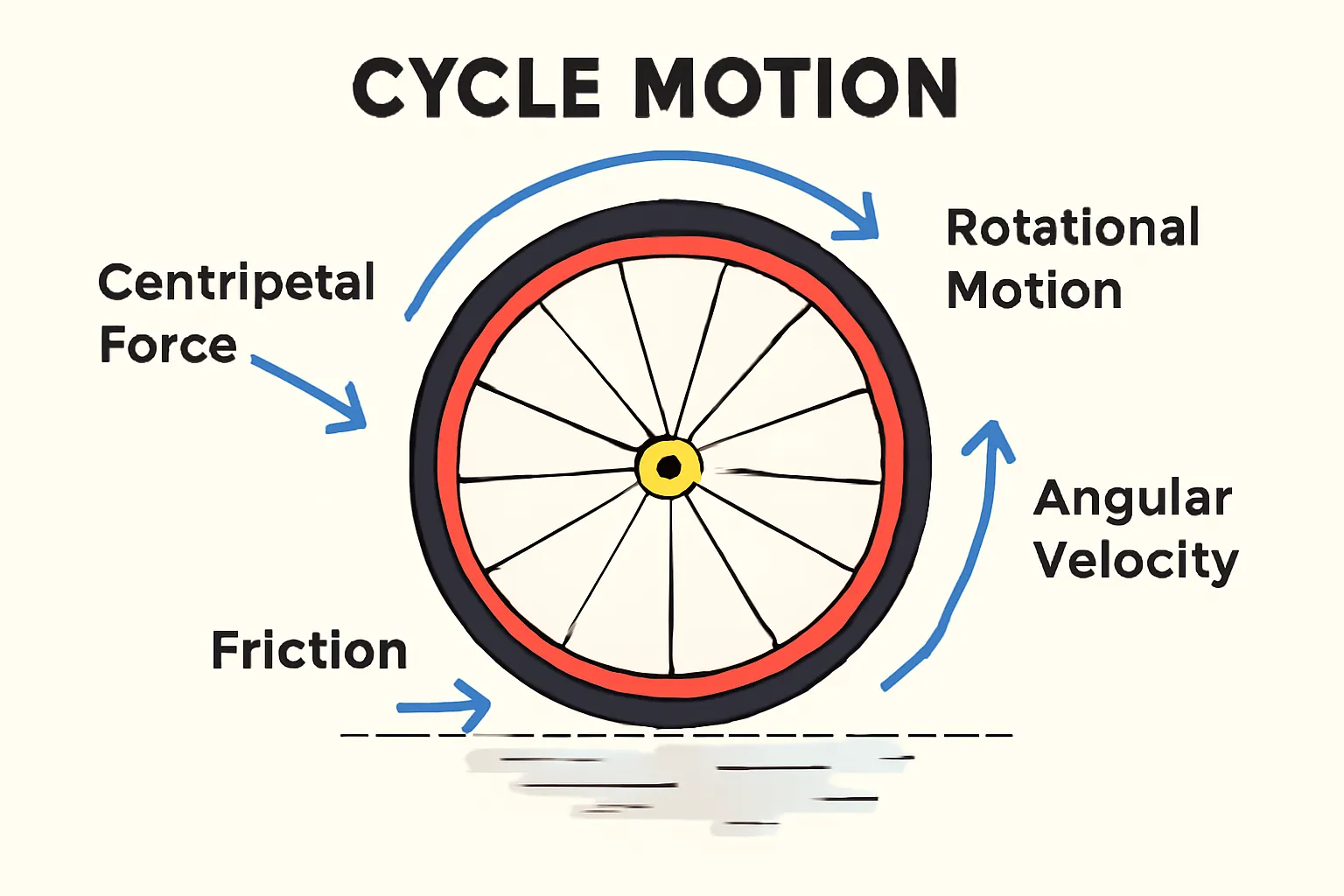Understanding Cycle Motion: Physics, Applications & Performance
Understanding Cycle Motion: What It Is and How It Works
Cycle motion is a description of cyclical motion of an object in circular motion, typically regulated by physical laws such as rotation motion and angular velocity. Cycle motion appears in a vast number of everyday applications from the rotation of bicycle wheels to advanced physics concepts. Understanding cycle motion is crucial for comprehending how objects move in circular paths and how forces such as centripetal force and friction come into play. In this article, we’ll explore the basic principles of cycle motion, its real-world applications, and how it affects the performance of objects like bicycles.
Table of Contents
- What Is Cycle Motion?
- The Physics Behind Cycle Motion
- Centripetal Force and Cycle Motion
- Real-World Applications: Cycle Motion in Bicycles
- How Cycle Motion Affects Bicycle Performance
- Conclusion: The Importance of Understanding Cycle Motion
What Is Cycle Motion?
Cycle motion, or rotational motion or circular motion, is the motion of a body along a circular path. The motion can be uniform, where a body moves with constant velocity, or non-uniform, where the velocity is not constant when moving along a circle. The most characteristic aspect of cycle motion and linear motion is that the direction of the body in cycle motion constantly changes even though its velocity is constant. The best illustration of cycle motion is revolving a wheel or the planetary orbit of the planets around the solar system.
The Physics Behind Cycle Motion
In order to truly understand cycle motion, one has to look at the physics forces behind it. Cycle motion uses plenty of physics ideas that all center on centripetal force, angular velocity, and inertia.
- Centripetal Force: Centripetal force refers to the force with which an object of circular motion is drawn towards the center of the circle. An object would travel in a straight line if there isn’t a centripetal force, because of inertia.
- Angular Velocity: This is used to describe the rate at which an object is moving around the center of the circle. It is expressed in radians per second and is used to quantify how fast an object is moving around its cycle.
- Inertia: In circular motion, inertia is the tendency of a body to oppose any change in its motion. For a body in circular motion, inertia tries to push it straight, but centripetal force holds it back to draw an orbit.
Both these laws together govern the motion of bodies in circular motion, ranging from car wheels to the spinning of a bicycle wheel.
Centripetal Force and Cycle Motion
The most important concept of circular motion is most probably centripetal force. It is the force that pulls an object moving in a circle in such a way that it doesn’t move in a straight line in any arbitrary direction.
For example, consider the case of a bicycle wheel: When the wheel is spinning, centripetal force is being exerted on the rubber tyres on the road that prevent them from running off in a tangent. If friction force exerted by the tyres on the road is not enough strong to match the centripetal force, then the rider will fall.
This philosophy is also applied in road banking and race track banking in that road slope is used to bank the centripetal force at the appropriate right angle to enable safe cycling speeds.
Real-World Applications: Cycle Motion in Bicycles
Cycle motion is a part of bicycle dynamics. You’re riding the bicycle and it’s occurring right before your eyes. The center axle is spinning with the wheels and the bicycle is moving since energy is being directed to it from the pedals. There are any number of problems that affect how a bicycle functions or operates:
- Turning and Wheel Size: Angular speed and distance traveled per revolution in a bicycle are both equal to the wheels of the bicycle. This means that bigger-sized wheels require less energy to travel longer distances, and smaller-sized wheels require more revolutions to travel the same distance.
- Gear Mechanism: The gears on the bike control how quickly the wheel spins. Through shifting gears, a cyclist modifies the angular velocity of the wheel by accelerating or decelerating in relation to the road.
- Friction: Friction between the tires and road surface when the cycle wheels rotate creates heat and can help or hinder movement of the cyclist. High friction (rain or mud) reduces movement and it is quicker on low friction (road surface).
For all of these conditions, an understanding of the principles of cycle motion can make cycling more efficient and enjoyable.
How Cycle Motion Affects Bicycle Performance
Cycle motion affects the real world and influences the way a bike rides. The better the rider becomes at applying the concepts of cycle motion, the easier to ride. Some of the most apparent effects that it has on the way a bike rides are:
- Pedaling Efficiency: Getting to know how gears, wheels, and pedals work together allows a cyclist to decide on the most efficient way of pedaling. Being in the correct gear means that the rider is not wasting energy, particularly when going uphill or when creating rapid accelerations.
- Control and Handling: Execution of the cycle motion is needed to balance and steer the bicycle when turning, braking, or doing other tasks. A cyclist must understand how wheels of a bicycle ride on a road and execute it to ride over obstacles smoothly.
- Speed control: Speed is controlled by controlling the angular speed of the wheels by changing gears and applying pedal power. Extra turns produce greater speed, while lower turns expend energy or traverse rough surfaces.
- Tire inflation pressure: Tire condition dictates the rolling resistance and thus the cycle motion efficiency. Inflated tires prevent friction, allowing for high-speed cycling as well as smoother travel.
Conclusion: The Importance of Understanding Cycle Motion
In general, cycle motion is a vital principle not only in physics but even in common usage such as cycling. Learning about rotational motion, centripetal force, and angular velocity will enable you to understand circular moving objects, such as bicycles, better. As a racing cyclist who wants to maximize your performance or merely someone interested in physics behind movement, cycle motion is one fascinating subject that balances theoretical and practical expertise. It is the gateway to comprehending everything from the smoothness of your ride to your overall notion of how motion and forces interplay with each other in the world around us.
FAQ
Cycle motion, or circular motion or rotational motion, is a form of motion of a body along a circular path. It is regulated by forces like inertia and centripetal force that keep the body in motion in a cycle motion.
Cycle motion affects bicycle performance through pedaling efficiency, speed control, control, and handling. Understanding cycle motion enhances cyclists’ energy expenditure, speed control, and quick response.
Centripetal force, friction, and inertia are the forces applied on a bicycle during cycle motion. They maintain the circular motion of a bicycle, control, and affect overall performance.
| Concept | Description |
|---|---|
| Centripetal Force | The force that acts on an object moving in a circular path to keep it from flying off in a straight line. |
| Angular Velocity | The rate at which an object rotates around the center of the circle, expressed in radians per second. |
| Inertia | The tendency of an object to resist changes in its state of motion. In cycle motion, it resists the change from a circular path. |




